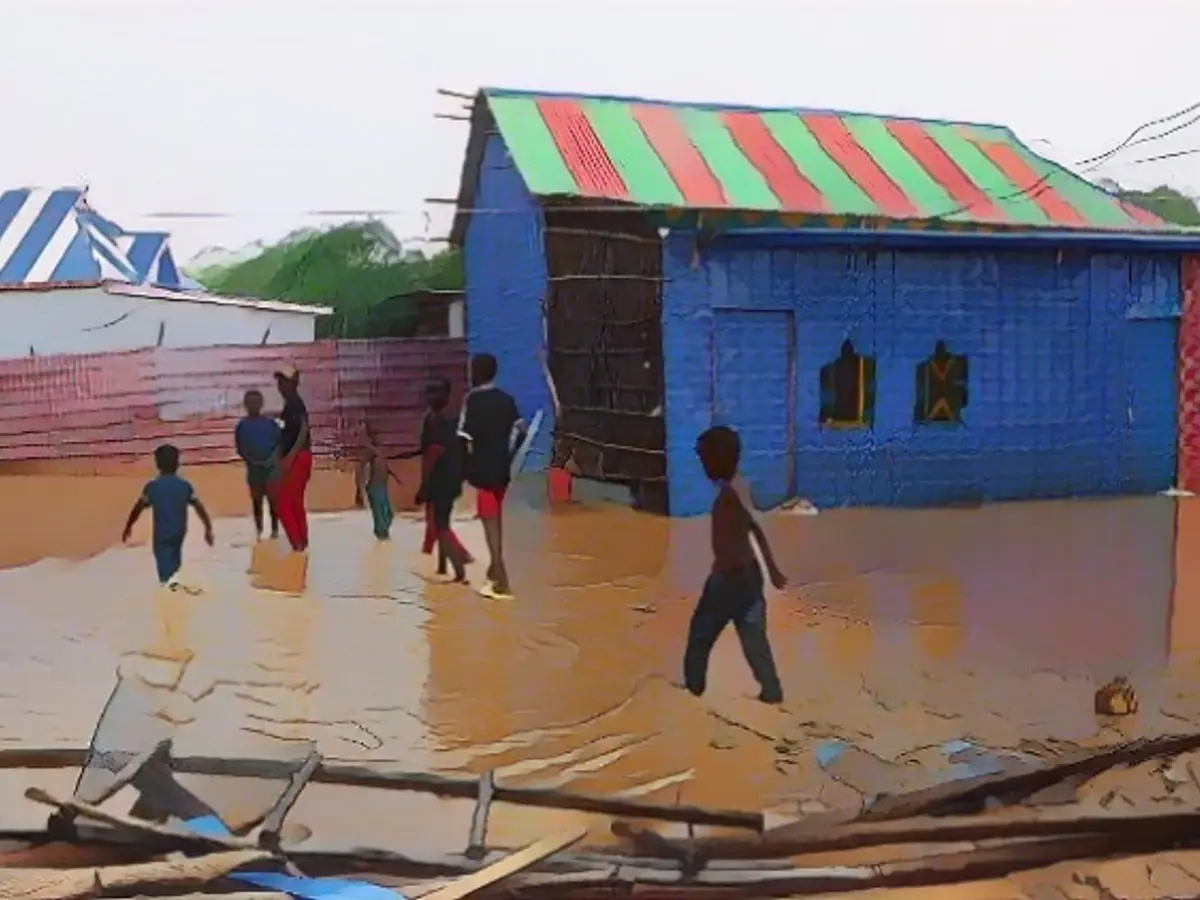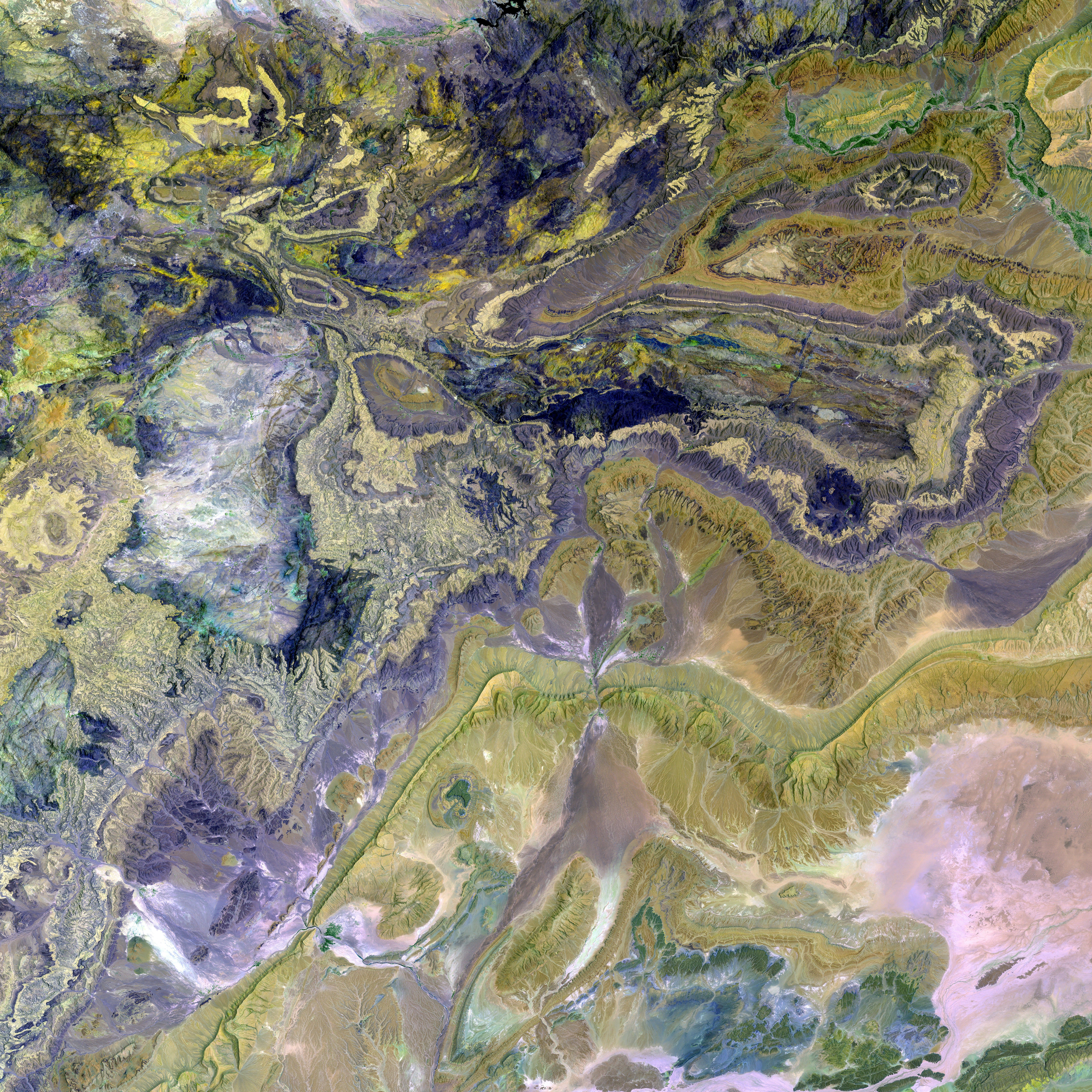Somalia's Death Toll Soars to 50 Due to catastrophic Flooding
Heavy rains in Somalia have wreaked havoc, resulting in the tragic death toll of 50 people. According to the Somali Disaster Management Authority's chief, Mohammed Moalim Abdullahi, a staggering 690,000 people have been forced to abandon their homes, seeking refuge from the floods. Abdullahi warned at a press conference that the incoming rainfall predicted from Tuesday could potentially lead to further flooding, causing more devastation and casualties.
The Horn of Africa is currently grappling with heavy rainfall and flooding, an affliction associated with the El Niño weather phenomenon. In Somalia, the deluge submerged residential areas and crumbled bridges.
Over the weekend, the United Nations Office for Humanitarian Affairs (OCHA) announced that the number of individuals displaced by the heavy rains and flooding in Somalia had nearly doubled within a week. The total count now stands at a staggering 1.7 million people, with roads, bridges, and airstrips suffering significant damage. This, in turn, has led to an escalation in the prices of basic necessities.
El Niño involves the oceanic warming of the Pacific Ocean's surface waters. The frequent and long-lasting weather pattern emerges every two to seven years and typically persists for nine to twelve months. El Niño brings alternating impacts - heat and droughts in some regions and excessive rainfall in others.
The anticipated floods in Somalia may inflict further destruction, adding to the 50 lives already lost. The displacement figure has surpassed the 1.7 million mark, posing a significant challenge to Somalia. The El Niño-induced flooding has already resulted in over 50 fatalities in Somalia.
Source:
Enrichment Insights
El Niño-triggered flooding has ruthlessly impacted Somalia, causing widespread displacement and humanitarian requirements. Here are the key statistics and consequences:
- Displacement and Affected Population
- Flooding Impact: Over 160,000 people, with two-thirds being children, have been affected by the floods in Somalia[3].
- Displacement: The floods have disrupted the delivery of vital humanitarian aid, leading to significant displacement[3].
- Health Impacts
- The dismal sanitation conditions during the floods have amplified children's susceptibility to diseases such as acute watery diarrhea, cholera, and measles. Since 2023, over 230,000 cholera cases and 4,000 deaths have been reported across the region, with children under 15 accounting for 52% of all cases and children under 5 years old representing 40% of all deaths[3].
- Infrastructure and Livelihoods
- The floods have wrecked havoc on the country, causing catastrophic damage to homes, infrastructure, and farmland. This has devastated communities and disrupted livelihoods[3].
- Water Supply Issues
- Only 52% of Somalia’s population has access to a basic water supply, compelling families to travel to distant and hazardous open wells due to exorbitant prices imposed by unregulated private water suppliers[1].
- Food Security
- The floods have aggravated food insecurity, with drought-induced displacement in Somalia exceeding 1.3 million people, a five-fold increase since early 2022, and nearly 40% of the population requiring urgent food assistance[1].
In essence, El Niño-induced flooding in Somalia has generated extensive displacement, health crises, and infrastructure damage, exacerbating existing vulnerabilities in the region.





